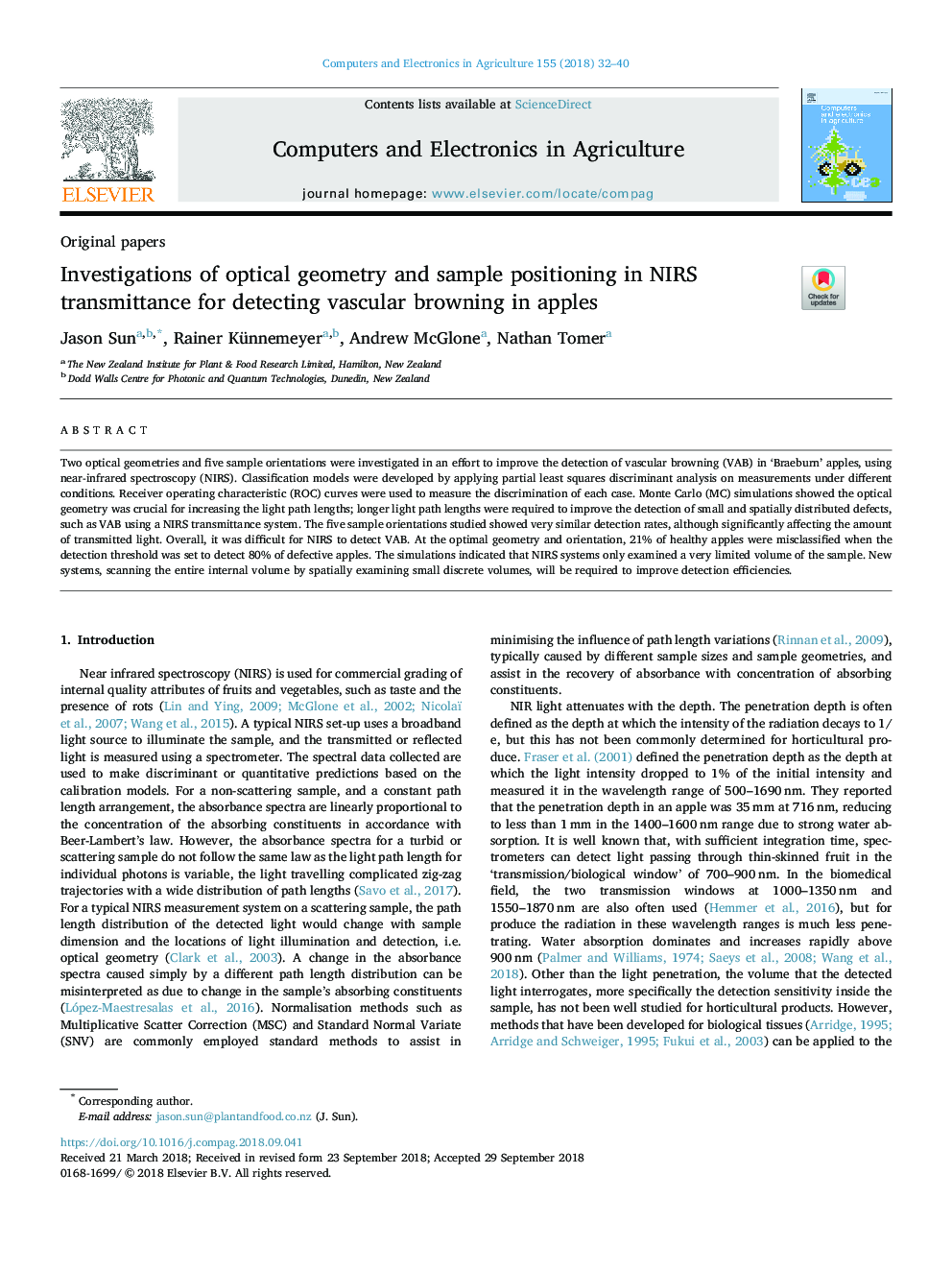| Article ID | Journal | Published Year | Pages | File Type |
|---|---|---|---|---|
| 11012835 | Computers and Electronics in Agriculture | 2018 | 9 Pages |
Abstract
Two optical geometries and five sample orientations were investigated in an effort to improve the detection of vascular browning (VAB) in 'Braeburn' apples, using near-infrared spectroscopy (NIRS). Classification models were developed by applying partial least squares discriminant analysis on measurements under different conditions. Receiver operating characteristic (ROC) curves were used to measure the discrimination of each case. Monte Carlo (MC) simulations showed the optical geometry was crucial for increasing the light path lengths; longer light path lengths were required to improve the detection of small and spatially distributed defects, such as VAB using a NIRS transmittance system. The five sample orientations studied showed very similar detection rates, although significantly affecting the amount of transmitted light. Overall, it was difficult for NIRS to detect VAB. At the optimal geometry and orientation, 21% of healthy apples were misclassified when the detection threshold was set to detect 80% of defective apples. The simulations indicated that NIRS systems only examined a very limited volume of the sample. New systems, scanning the entire internal volume by spatially examining small discrete volumes, will be required to improve detection efficiencies.
Related Topics
Physical Sciences and Engineering
Computer Science
Computer Science Applications
Authors
Jason Sun, Rainer Künnemeyer, Andrew McGlone, Nathan Tomer,
